Abstract
The acid-insoluble nitrogen content, lipid content, and cytochrome oxidase activity in the mitochondrial fraction are found to increase during incubation of slices of sweet potato (Ipomoea batatas) root tissue. These increases appear to be related to an increase in the number of the mitochondrial particles. The increase in the mitochondrial fraction is not accompanied by an increase in cell number. The nitrogen content in the mitochondrial fraction increases prior to the changes in the activity of cytochrome oxidase and lipid content. The increase in the numbers of the mitochondrial particles lags behind the increase in the cytochrome oxidase activity. Such findings are also found in the tissue infected by Ceratocystis fimbriata.
The respiratory increase in response to wounding and infection appears to be a result of an increase in mitochondrial particles.
Full text
PDF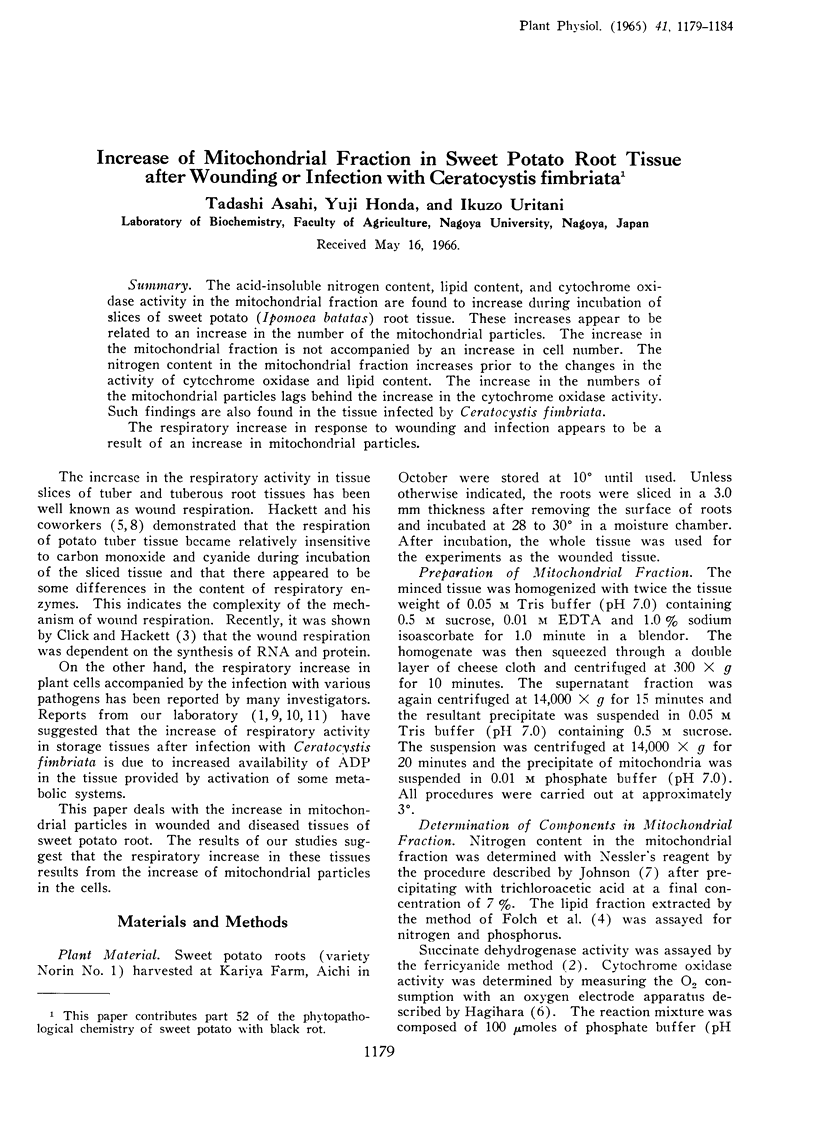

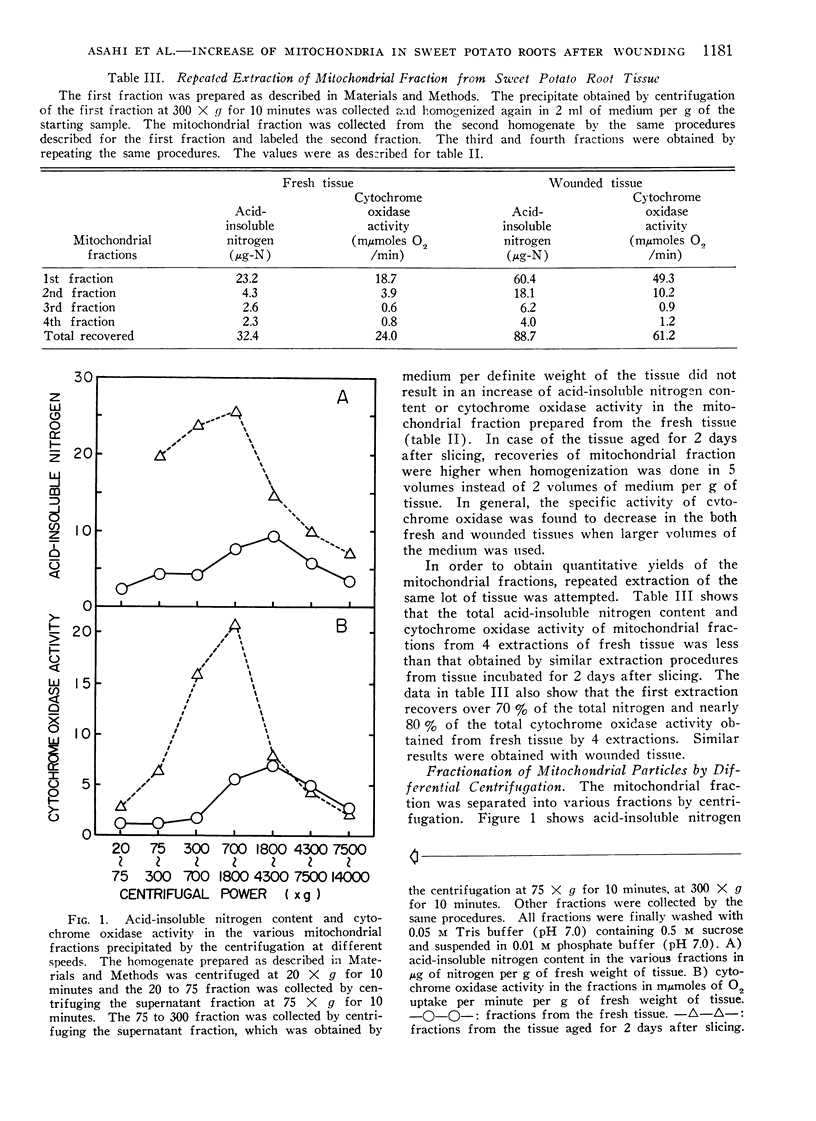
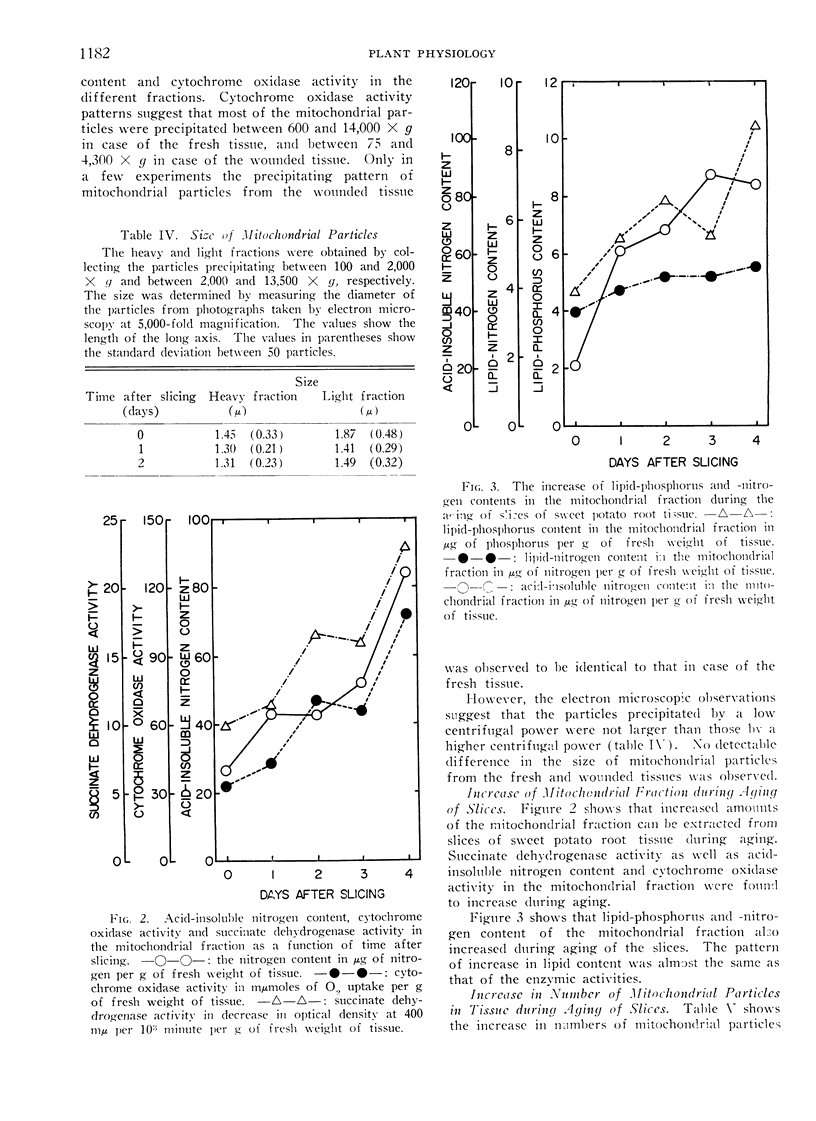
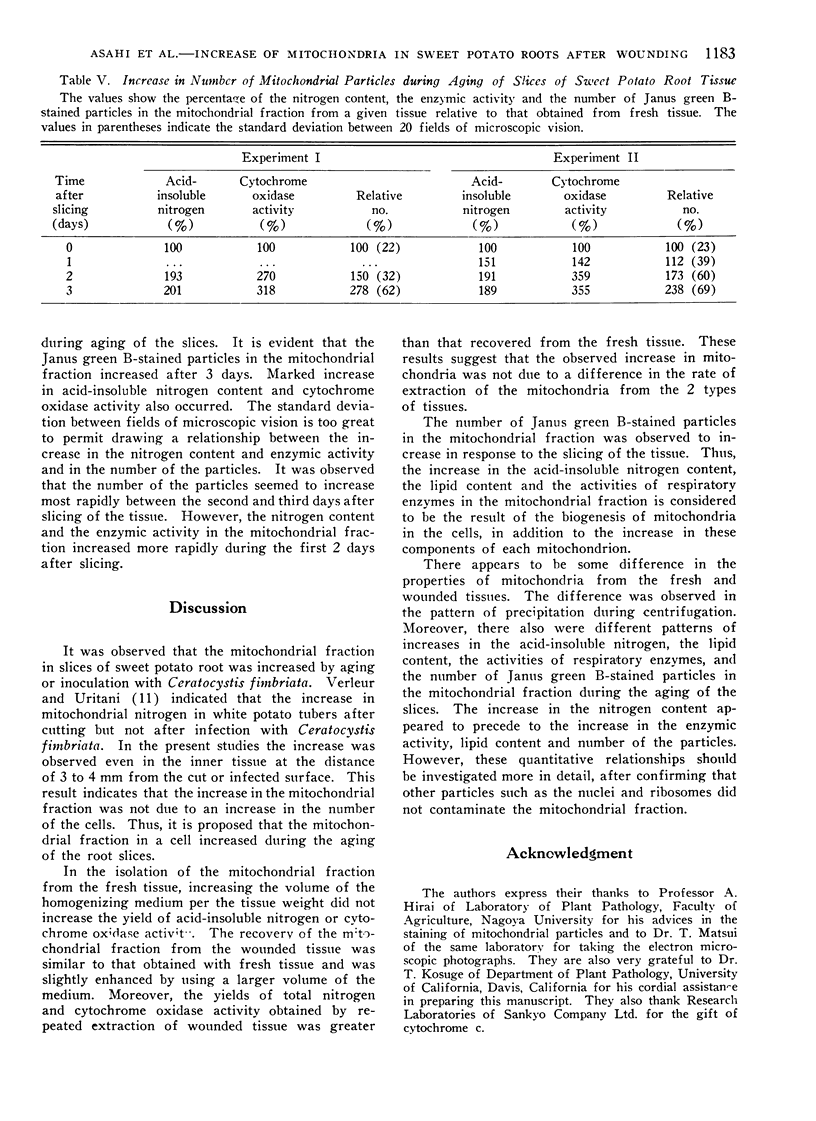
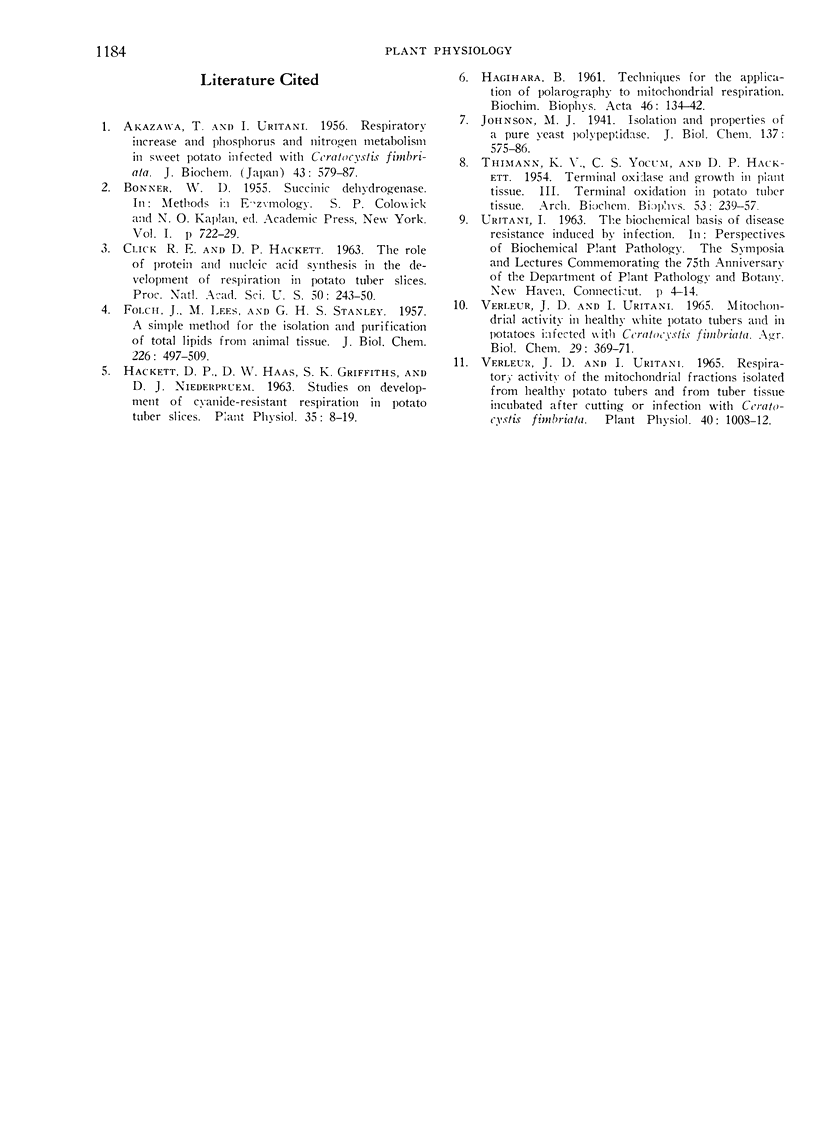
Selected References
These references are in PubMed. This may not be the complete list of references from this article.
- FOLCH J., LEES M., SLOANE STANLEY G. H. A simple method for the isolation and purification of total lipides from animal tissues. J Biol Chem. 1957 May;226(1):497–509. [PubMed] [Google Scholar]
- HAGIHARA B. Techniques for the application of polarography to mitochondrial respiration. Biochim Biophys Acta. 1961 Jan 1;46:134–142. doi: 10.1016/0006-3002(61)90656-4. [DOI] [PubMed] [Google Scholar]
- Verleur J. D., Uritani I. Respiratory Activity of the Mitochondrial Fractions Isolated from Healthy Potato Tubers and from Tuber Tissue Incubated after Cutting or Infection with Ceratocystis fimbriata. Plant Physiol. 1965 Nov;40(6):1008–1012. doi: 10.1104/pp.40.6.1008. [DOI] [PMC free article] [PubMed] [Google Scholar]


